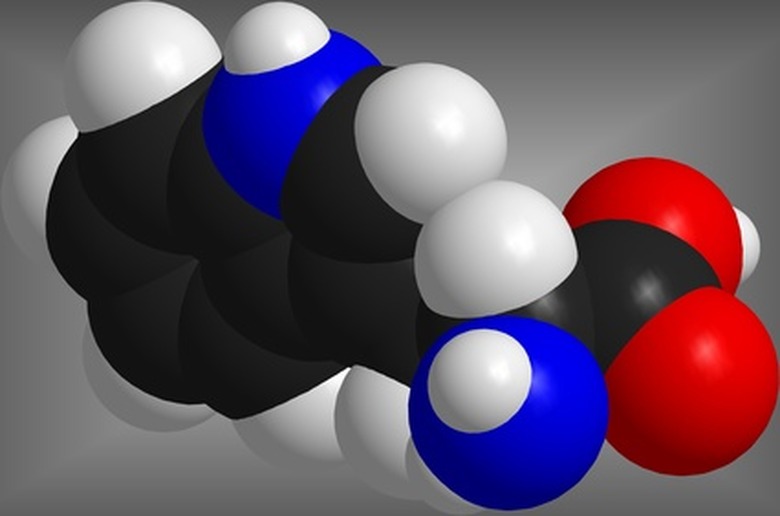The Most Common Organic Molecules In Cells
Molecules most often found in living things and that are built on a carbon framework are known as organic molecules. The carbon is linked in a chain or ring with hydrogen and various functional groupings attached to the chain or ring to make a monomer. The monomers link together to form molecules. Four common groups of organic molecules are found in all cells.
Carbohydrates
Carbohydrates
Carbohydrates have a carbon atom with two hydrogen atoms and three to six oxygen atoms. In plant cells, carbohydrates provide structure in the form of cellulose and food in the form of starch. All sugars are carbohydrates and these fuel numerous cellular activities including photosynthesis. Examples of carbohydrates are glycogen, glucose, sucrose and lactose.
Lipids
Lipids
Constructed of a fatty acid chain of carbon and hydrogen with an alcohol group at the end, lipids include fats, waxes, steroids and cholesterol. After using carbohydrates for energy, cells converting the excess into fats and oils for energy storage. The lipid group of hormones and steroids send messages between cells such as when adrenaline cues your body to act in the face of danger. Lipids also make up cell membranes.
Proteins
Proteins
Constructed through different combinations of the 20 amino acids, proteins perform numerous functions in cells. Proteins include enzymes that catalyze reactions, collagen and keratin that give structure, hemoglobin that provides oxygen and microtubules that aid in cell movement and division.
Nucleic Acids
Nucleic Acids
Nucleic acids are made up of nucleotides constructed of a sugar, a phosphate group and one of five nitrogenous bases. DNA is a type of nucleic acid with deoxyribose for the sugar and adenine, and guanine, cytosine and thymine as the nitrogenous bases. RNA is similar to DNA but it has ribose instead of deoxyribose for its sugar and can also have uracil as a nitrogenous base. Other nucleic acids include the energy carrying molecules ATP and NAD.
Cite This Article
MLA
Painter, Tammie. "The Most Common Organic Molecules In Cells" sciencing.com, https://www.sciencing.com/common-organic-molecules-cells-7868340/. 24 April 2017.
APA
Painter, Tammie. (2017, April 24). The Most Common Organic Molecules In Cells. sciencing.com. Retrieved from https://www.sciencing.com/common-organic-molecules-cells-7868340/
Chicago
Painter, Tammie. The Most Common Organic Molecules In Cells last modified March 24, 2022. https://www.sciencing.com/common-organic-molecules-cells-7868340/
